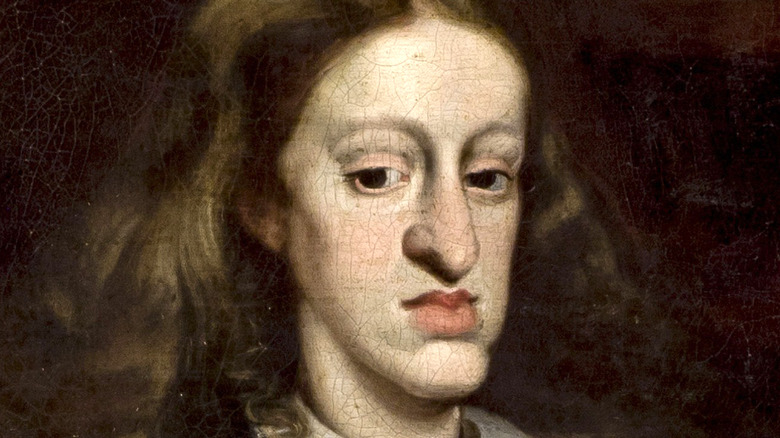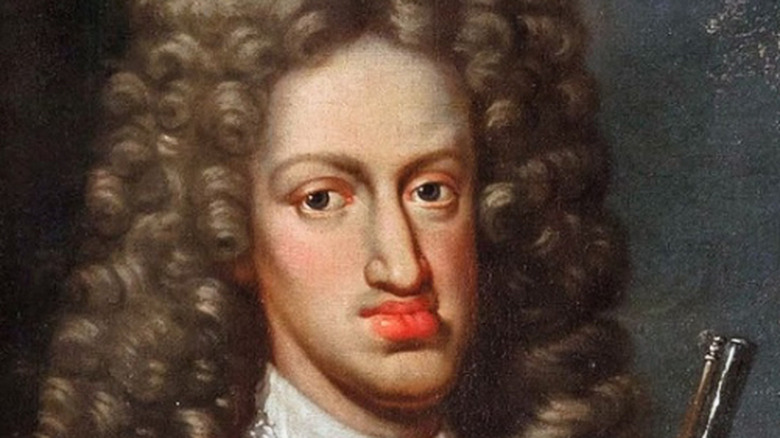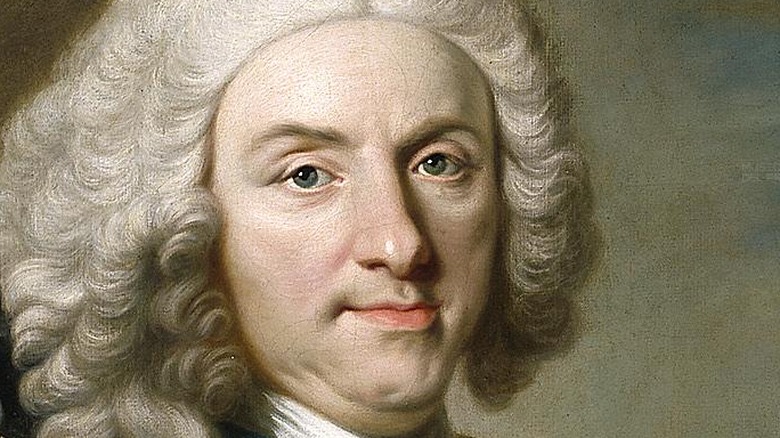The History Of The Habsburg Chin Explained
A quick flip through any European history book might land you on several royal portraits of the Habsburgs. This well-known royal family name can be traced back to Switzerland when Otto II ruled around 1100 A.D. (via House of Habsburgs). Through strategic marriage alliances, this empire grew to include Austria and eventually the Spanish Empire.
But you might notice some peculiar facial features if you study Habsburg portraits from the 16th and 17th centuries. A long, protruding lower jaw and large lips can be seen on many of these monarchs from this era and is a result of the genetic disorder known as mandibular prognathism (via The Health Board). The condition is passed on to offspring when each parent carries the recessive gene. The likelihood of inheriting a deformity increases greatly when close inbreeding occurs, as related people are more likely to carry the same recessive genes (via Biology Dictionary). These recessive genes are the same ones that brought an end to a centuries-old European empire.
The jaw of Charles II
Though many Habsburg rulers had the jawline famously associated with the family name, it was Charles II of Spain who is the most famously known for it. His royal portrait shows a young man displaying what would seem to be a gross caricature at first glance. An enormous lower jaw protrudes from his face and historians have pointed out that this defect made it nearly impossible for Charles to chew his food (per All That's Interesting). Also, a weak digestive system made it very difficult for him to process the nutrients needed to maintain a healthy body.
But the ailments this monarch had didn't stop there. His swollen tongue made it nearly impossible for him to speak. He was uneducated and also very weak. He wasn't able to walk until he was 8 years old and had seizures throughout his life (per The Famous People).
Charles' appearance was so disturbing that his wife was terrified of him. He was known as "El Hechizado" by the royal court, which is Spanish for "The Bewitched," and the ruler's portraits don't depict the true nature of his deformities. This is because artists would have been given instructions to make him appear as handsome as possible (via The History Collection).
Generations of inbreeding
Charles was almost fated to be a collection of genetic maladies. All of his great-grandparents were descendants of the same set of parents, Philip I and Joanna of Castile (per The History Collection). For this to be possible, each child born of that union would have married a first cousin. Then their children would have procreated with their first cousins or someone else closely related to them.
But it doesn't end there. His parents were an uncle-niece couple. This makes his mother his cousin. Looking further back in the family tree, it's also apparent that Charles' father was his great-uncle.
Abnormal facial features, physical health defects, and diminished intellectual capacities weren't the only problems that the king had. In later years, he began to have hallucinations and his autopsy revealed that he had an abnormally small heart and lungs, and gangrenous intestines. His lone testicle was deformed and "black as coal," perhaps explaining why he was never able to sire a child (via World Royals).
The end of an era
Unfortunately for the Habsburgs and their reign, the generations of inbreeding led to the downfall of their European dynasty. Unable to produce an heir to the Habsburg throne, Charles II died at the age of 38 in 1700 (via The Famous People). With no heir, the empire's fate was sealed by a last-minute change to Charles' will, in which he declared that his throne is passed to Philip of Anjou (via Royal Hampshire Regiment). Philip was the grandson of Charles' half-sister Maria Theresa and the product of her marriage to the Louis XIV of France.
The other royal families in Europe had long since been opposed to the French and the Spanish Habsburgs consolidating into one empire, and Philip's ascension to the throne would do just that. Shortly after Philip was crowned Philip V, a war broke out in early 1701 that involved the majority of Europe. Known as the War of Spanish Succession, it ended with the Peace of Utrecht in 1713. As a stipulation of this treaty, no one monarch could hold the crown of both the Spanish and French empires. Philip V continued his reign as Spanish king until his abdication in 1724, after which his son Louis took the throne. Philip regained the throne before the end of the year when Louis died from smallpox. Philip then continued as king until he died in 1746 (via Britannica).



